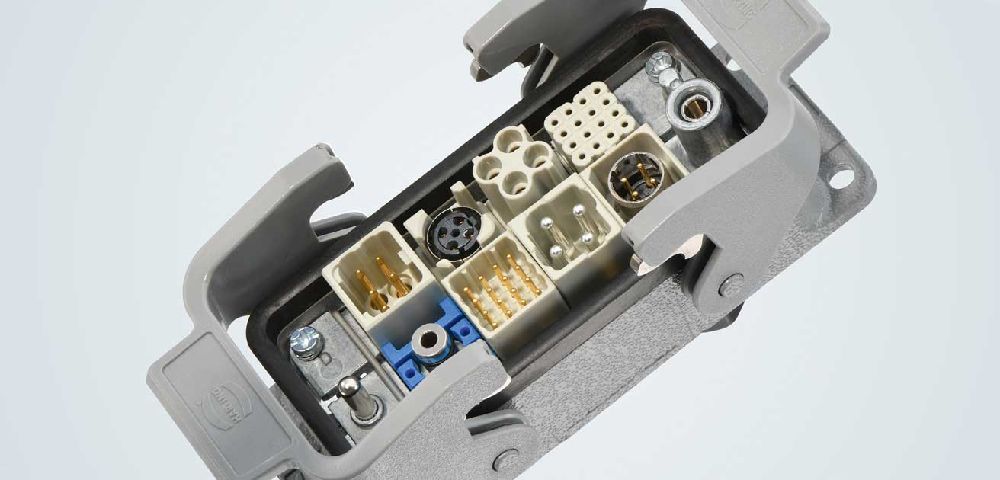Harting connectors stalwarts in multiple industries, owing to their resilience and adaptability, have long held sway. Yet as technology progresses and hurdles surface, exploring alternatives that promise heightened performance and flexibility becomes imperative. So the question beckons: what substitutes exist for Harting connectors, and how do they measure up against the conventional answer?

Understanding Harting Connectors
Before we explore other options, it's crucial to understand the essence of Harting connectors and the reasons for their widespread adoption. These connectors play a vital role in securely joining electrical circuits comprising a male plug and female socket with multiple pins or sockets for transmitting data, power, or signals.
Need for Alternatives
In light of the limitations imposed by Harting connectors, industries are increasingly exploring alternative solutions to cater to specific pain points and offer superior performance in defined situations. Whether it the need for compact designs, faster data transfer rates or enhanced robustness, alternative connectors emerge as a practical choice for sectors seeking to optimize their connectivity infrastructure.
Types of Alternative Connectors
Push-Pull Connectors
Push-pull connectors provide an easy alternative to Harting connectors, renowned for their small size and user-friendly design. These connectors feature a straightforward yet efficient mechanism that enables rapid and secure mating, making them a perfect fit for applications requiring frequent connection and disconnection.
Circular Connectors
Circular connectors serve as a resilient and trustworthy solution for a variety of industrial needs. In demanding environments, their rigid construction and IPrated sealing make them excel where moisture dust and vibrations are prominent. With multiple size options and configurations, circular connectors can adapt to diverse requirements without compromising performance.
Modular Connectors
Modular connectors empower users to create personalized connectivity solutions that align with their unique needs. By leveraging interchangeable modules, these connectors provide adaptability and scalability suited for various applications such as telecommunications and automation.
Advantages of Alternative Connectors
Shifting to alternative connectors paves the way for a plethora of benefits compared to traditional Harting connectors. Picture this:
- Space Efficiency: In the realm of compactness, numerous alternative connectors often present a more streamlined configuration. This characteristic proves especially beneficial in environments constrained by space limitations.
- Enhanced Performance: The world of connectors is a fast lane where speed demons reign. They offer a turbo boost to data transmission, ensuring rock-solid signal integrity, and pave the way for peak throughput and unwavering reliability.
- Depending on your specific application and usage levels, you may discover that alternative connectors offer cost efficiencies that surpass those of Harting connectors.
- Simplicity in Upkeep: Certain substitute connectors exhibit toolless designs or modular components, thereby streamlining the procedures for installation and maintenance.
Applications of Alternative Connectors
Alternative Connectors' Versatility in Diverse Industries like:
- The aerospace and defense sectors are dynamic realms that spearhead innovation and national security initiatives, shaping the future of aviation and strategic defense solutions to safeguard our world. With cuttingedge technological advancements and forward-thinking strategies, these industries ensure a safer and brighter tomorrow for generations to come.
- The automotive realm, with its mesmerizing blend of innovation and artistry, continually mesmerizes enthusiasts globally. From intricate engineering marvels to sheer elegance the industry represents a captivating journey of skill and sophistication appealing to both the mind and the senses.
- Telecommunications, the intricate dance of signals across continents and skies, serves as the lifeblood of our interconnected world, knitting individuals, businesses, and nations together in a tapestry of communication possibilities.
Cost Considerations
When examining alternative connectors, one must consider critical factors like the initial investment long-term maintenance expenses, and total ownership costs. While these alternatives may yield cost savings in certain aspects, it is paramount to deliberate the benefits against the upfront expenditures and continuous maintenance requirements.
Compatibility with Existing Systems
Ensuring the compatibility of alternative connectors with existing equipment and systems is akin to fitting together a complex puzzle. The smooth transition to new connectors requires seamless integration into the current infrastructure to minimize disruptions and uphold interoperability.
Reliability and Durability
Stringent reliability and durability standards are crucial for alternative connectors, especially in industries where uninterrupted operations are vital. For example, verifying robust construction IPrated sealing and resistance to environmental factors are fundamental characteristics to seek in alternative connectors.
Ease of Installation
When assessing alternative connectors, the ease of installation and integration emerges as a critical consideration. Opting for connectors that provide plug-and-play compatibility or toolless installation not only streamlines deployment but also reduces installation time.
Challenges and Considerations
While alternative connectors offer numerous advantages, they also come with their own set of challenges and considerations. These may include:
- Compatibility issues with legacy systems
- Interoperability with third-party equipment
- Standardization and industry regulations
- Long-term reliability and maintenance requirements
Future Trends
The future of connectivity is poised for continued innovation and advancement. Emerging technologies such as IoT, 5G, and Industry 4.0 will drive the demand for more intelligent, efficient, and interconnected solutions. Alternative connectors will play a crucial role in enabling these innovations and shaping the future of connectivity.
Key Takeaway
In conclusion, while Harting connectors have been a reliable choice for many years, alternative connectors offer a compelling solution for industries seeking to overcome specific challenges and optimize their connectivity infrastructure. Whether for space-saving requirements, enhanced performance, or compatibility with modern systems, alternative connectors provide a viable alternative worth considering.
You Might Also Like: How Long Does a 3-Volt Battery Last?








